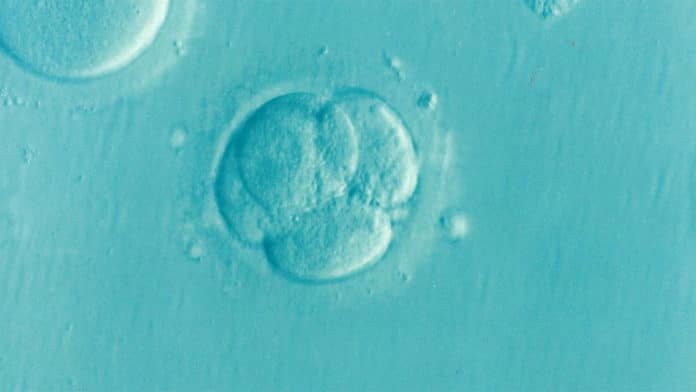The second week of embryonic development is believed to be the critical stage of embryo development or embryogenesis. One of the essential features of the second week is the completion of implantation and the establishment of fetomaternal interactions. Failure of development during this time is one of the major causes of early miscarriage.
Still, very little is known about the development of the human embryo once it implants, as it is inaccessible for study.
In 2016, scientists came up with a technique that allows human embryos to culture outside the mother’s body. That technique allowed scientists to study up to day 14 of development for the first time.
In a new study, which includes the same team of scientists collaborating with colleagues at the Wellcome Sanger Institute, scientists identified critical molecular events in the developing human embryo between days 7 and 14. They found that- Hypoblast, a group of cells outside the embryo, sends a message to the embryo that initiates the development of the head-to-tail body axis.
When the body axis begins to form, the symmetrical structure of the embryo starts to change. One end becomes committed to developing into the head end, and the other the ‘tail.’
The study also reveals that the molecular signals involved in the formation of the body axis show similarities to those in animals, despite significant differences in the positioning and organization of the cells.
Professor Magdalena Zernicka-Goetz in the University of Cambridge’s Department of Physiology, Development, and Neuroscience said, “We have revealed the patterns of gene expression in the developing embryo just after it implants in the womb, which reflects the multiple conversations going on between different cell types as the embryo develops through these early stages.”
“We were looking for the gene conversation that will allow the head to start developing in the embryo and found that it was initiated by cells in the hypoblast– a disc of cells outside the embryo. They send the message to adjoining embryo cells, which respond by saying, ‘OK, now we’ll set ourselves aside to develop into the head end.”
By sequencing the code in the thousands of messenger RNA molecules, scientists were able to identify gene conversations in developing embryos. They captured the evolving molecular profile of the developing embryo after implantation in the womb, revealing the progressive loss of pluripotency as the fates of different cells are determined.
Dr. Roser Vento-Tormo, one of the senior authors and Group Leader at the Wellcome Sanger Institute, said, “By creating an atlas of the cells involved in human development and how they communicate with other cells, we can start to understand more about the cellular processes and mechanisms behind very early embryo growth, which has been much harder to study compared to other mammals. This freely available information can now be used by researchers worldwide to help inform future studies.”
Zernicka-Goetz said, “Our goal has always been to enable insights to very early human embryo development in a dish, to understand how our lives start. By combining our new technology with advanced sequencing methods, we have delved deeper into the key changes that take place at this incredible stage of human development, when so many pregnancies unfortunately fail.”
Journal Reference:
- Mole, M.A. et al.: ‘A single-cell characterization of human embryogenesis identifies pluripotency transitions and putative anterior hypoblast center.’ Nature Communications, June 2021. DOI: 10.1038/s41467-021-23758-w
